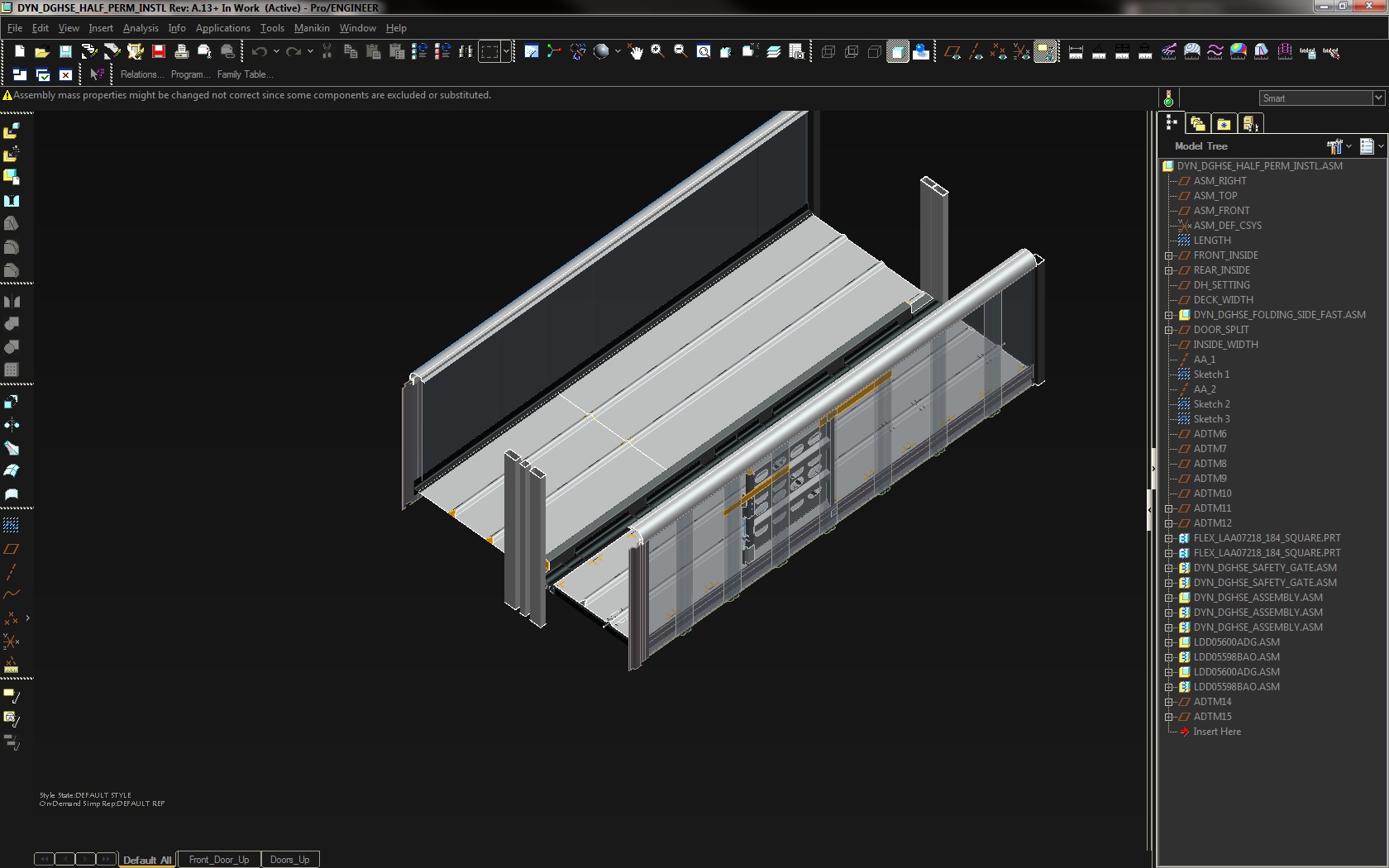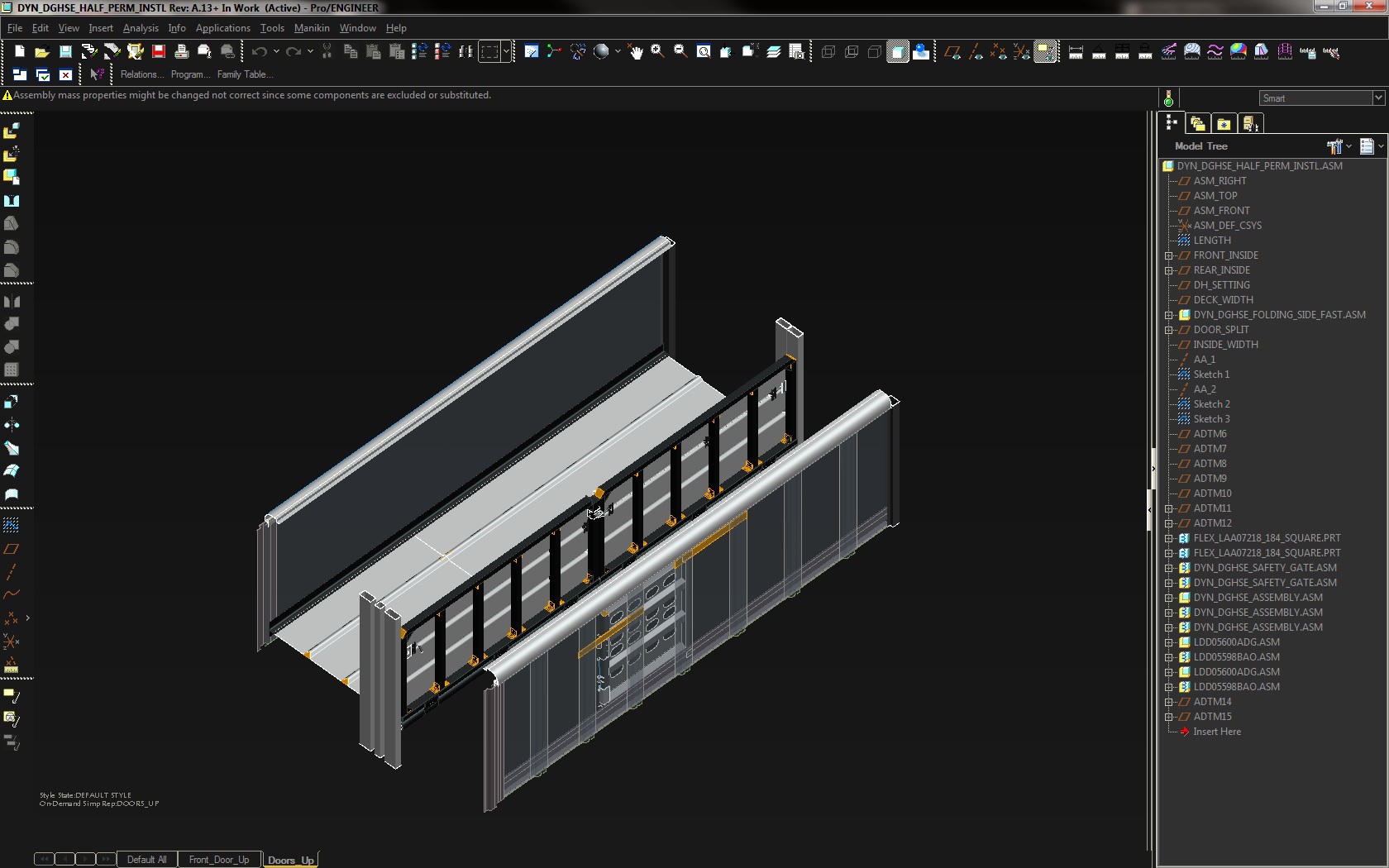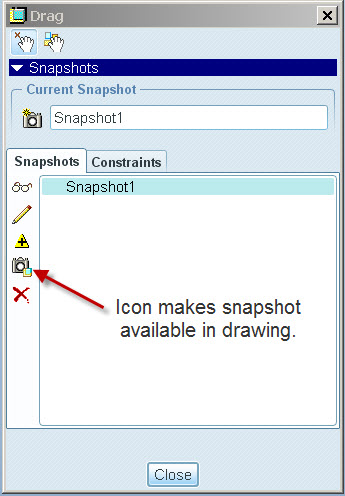Community Tip - Stay updated on what is happening on the PTC Community by subscribing to PTC Community Announcements. X
- Community
- Creo+ and Creo Parametric
- 3D Part & Assembly Design
- Re: Simplified Reps and Dynamic Assemblies
- Subscribe to RSS Feed
- Mark Topic as New
- Mark Topic as Read
- Float this Topic for Current User
- Bookmark
- Subscribe
- Mute
- Printer Friendly Page
Simplified Reps and Dynamic Assemblies
- Mark as New
- Bookmark
- Subscribe
- Mute
- Subscribe to RSS Feed
- Permalink
- Notify Moderator
Simplified Reps and Dynamic Assemblies
I have a dynamic assembly that I need to show in 3 different settings. I inserted the subassembly in 3 times and applied flexibility to show each insert with different settings. I created 3 simplified reps to show the 3 different settings in the drawing and to show only the weight of one of the inserts on the drawing. The problem is I'm having 5-15 minute regen times. The subassembly alone regens fairly quickly. Any tips to dramatically reduce regen times or a completely different method of getting the same outcome.
The attached picture is a simple example of what I'm doing.
Thanks
- Labels:
-
Assembly Design
- Mark as New
- Bookmark
- Subscribe
- Mute
- Subscribe to RSS Feed
- Permalink
- Notify Moderator
Hi James...
I have a thought that's somewhat out of the box. You've probably already considered family tables and having different instances represent the 3 different settings so we'll skip that one.
Flexible features are known to slow things down a little. Add that to the extra subassemblies and simplified reps and it's no wonder you've got a regen issue. What if we could display your assembly in 3 different positions without adding flexibilty, simplified reps, OR added subassemblies?
Why not use EXPLODE STATE functionality... but instead of exploding the subassembly, just rotate it into a different position? You can make 3 different states which show your components articulating and moving... and then display them in 3 different views on your drawing.
I bet that will speed things up and simplify the whole assembly, too. Granted this might not work on some really complex systems but I'd bet it would work for mid-sized assemblies... especially if you're only doing this for a drawing and don't need it for CG analysis.
I realize your examples were greatly simplified and this might not work for your full assembly but it's about the only way I can think to remove the problem short of perhaps using mechanisms in some clever way.
Thanks!
-Brian
- Mark as New
- Bookmark
- Subscribe
- Mute
- Subscribe to RSS Feed
- Permalink
- Notify Moderator
James,
Since it is a dynamic assembly, give this a try:
Lee,
All you need to do is take snapshots of the positions you want. You may then pick the icon shown below in the dialog box to show the view on your drawing. If you want to rename your snapshot, you need to do so before the icon pick.
Once you are in the drawing, insert your view, open the drawing view diaglog box, then select View States, and check the Explode components in view box. Select your snapshot, and it will stay that way regardless of how your assembly position changes. Hope this helps.
Tim
- Mark as New
- Bookmark
- Subscribe
- Mute
- Subscribe to RSS Feed
- Permalink
- Notify Moderator
Ahhh... excellent comment Tim! That's the answer! You're right... with a mechanism it's easy to drag items and create snapshots for the drawing.
- Mark as New
- Bookmark
- Subscribe
- Mute
- Subscribe to RSS Feed
- Permalink
- Notify Moderator
Brian,
Thank you for the great idea. - I wanted to show the position for a casing lid when closed, and when manually lifted and placed in the open position. I could have done it with a mechanism connection but its not a simple hinge joint so would have been a lot of work.
The result is shown below.
Thank you,
Sam
-------------------------------------
- Mark as New
- Bookmark
- Subscribe
- Mute
- Subscribe to RSS Feed
- Permalink
- Notify Moderator
I've tried these methods but once I make a dynamic change to my assembly these views don't regenerate properly.
What would be nice is if PTC would add the option to control dimensions with simp reps.
- Mark as New
- Bookmark
- Subscribe
- Mute
- Subscribe to RSS Feed
- Permalink
- Notify Moderator
Hi James...
What kind of changes are you making to the assembly- just simple movements? The reason I suggested explode states is that exploded views don't update in drawing mode without being manually edited.
There's a well-known bug/feature of exploded views that once you've placed them on the field of the drawing, they don't update automatically even if you change the position of components in the explode state. Unless this has changed in Wildfire 5, I thought you could use this to your advantage by making 3 states showing your components in different positions. By placing them on the drawing, they should "freeze" into position.
If this isn't happening, you can always get the views correct on the drawing and then "snapshot" them. The downside is that this breaks the parametric abilities of the view ... literally the view becomes draft entities (just lines and text). The upside is... the view will never change. It's literally frozen. You can do this by selecting a view, going to the Layout tab, and selecting Convert to Draft Group.
If none of these options is working, help us understand the kind of changes you're making so we can reproduce the issue and try to figure out another solution.
Thanks and good luck!
-Brian
- Mark as New
- Bookmark
- Subscribe
- Mute
- Subscribe to RSS Feed
- Permalink
- Notify Moderator
Height, length, and widths change and new components come in and out.



- Mark as New
- Bookmark
- Subscribe
- Mute
- Subscribe to RSS Feed
- Permalink
- Notify Moderator
When you say dimensions change and new components come in and out, I immediately think family table. . This will solve your problem of the drawing views not updating. Of course having 3 instances with 3 separate names brings its own problems.
Your main choices are family tables or flexible components. Flexibile components gives you ONE model and allows you to use Simplified Reps (as you're currently doing). Family tables solves the drawing problem and eliminates the need for simplified reps but saddles you with separate instance names.
Because of the known sluggishness with flexibile components... maybe it's worth a try making one top level assembly family table to perform the changes you need? This will reduce the number of components in your assembly... hopefully reducing regen time. There's a performance hit for the table but it may be significantly less that having multiple components, simp reps, and flexibility all enabled at the same time. You can have 3 BOMs with each one being controlled by a different instance (if necessary).
Does this sound like a reasonable approach or am I missing something? I readible admit this could be like swapping one set of problems for another set but I can't see another way to achieve what you're after otherwise. If Tim's suggestion is still not working and the explode state thing fails, I think this might be what we're left with.
What are your thoughts?








